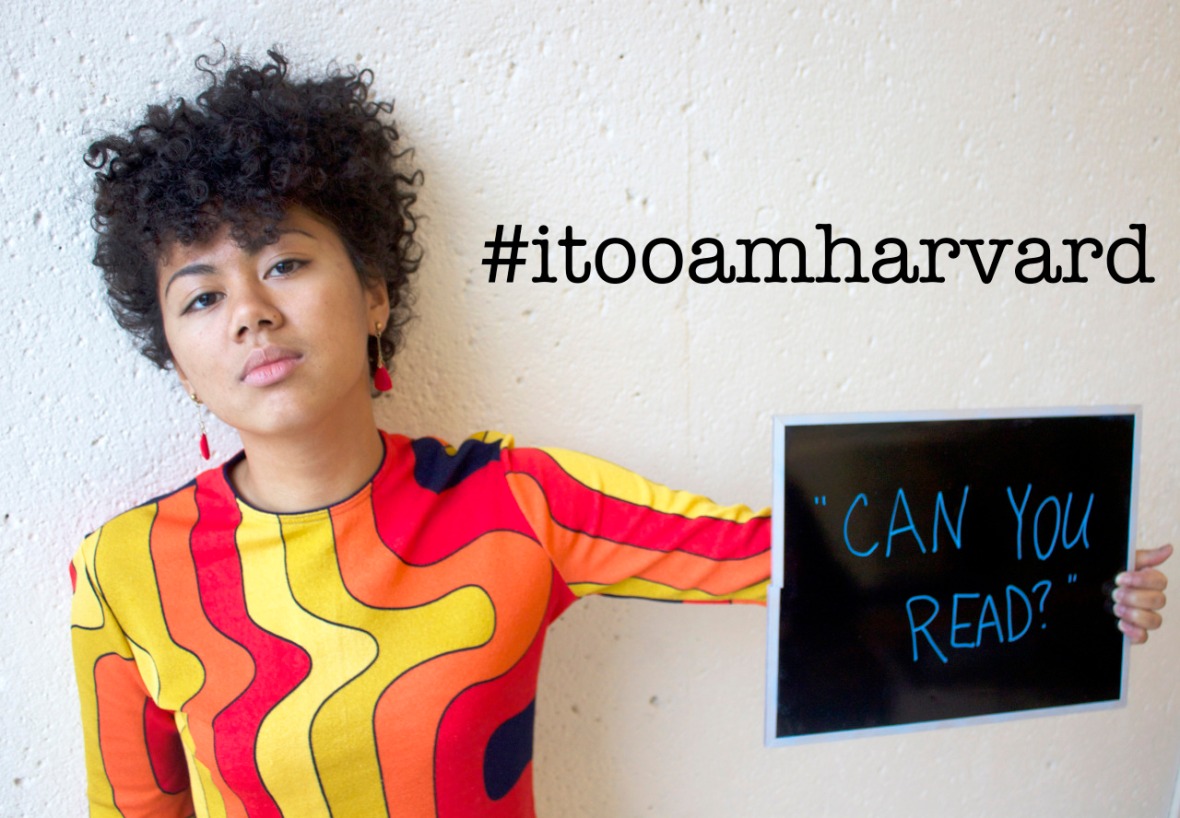Education was denied to Blacks for centuries. When it finally arrived, it was segregated, unequal, and inadequate. Because schools are now desegregated, many make the mistake of thinking educational opportunities are now equal for all people, but that’s far from true.
In fact, despite improving overall graduation rates, the graduation gap between white and black students has grown, and the achievement gap has barely narrowed. A recent study showed that “if the achievement gaps continue close at such an incremental rate, it will be roughly two and a half centuries before the black-white math gap closes and over one and a half centuries until the reading gap closes.”
And Black students still face an inherent system of racism and racial bias, even from their peers.

The I, Too, Am Harvard project has collected the experiences of Black students attending one of the most prestigious schools in the country – an experience fraught with microaggressions. Fellow students question Black students’ basic intelligence and their very presence at the institution. This project seeks to reclaim ownership of the campus, which (especially as a place of higher learning) should feel open and welcome to all who attend. Read through the photo campaign and watch the accompanying video, where students talk about what it’s like to be Black at Harvard.
The assumption of lower intelligence is one of the 5 Ways Black People Experience Non-Physical Violence on College Campuses. Vanessa Rochelle Lewis writes about how Black students are profiled and targeted by campus security, chastised for pushing back against institutional racism, and often feared by their White teachers. Attempts to create programs focused on Black students’ needs are deemed racist. The system that should be lifting students up is, instead, one of the many things Black students must struggle through.
Which brings us to today’s vocabulary: safe spaces. Safe spaces are not about being free from criticism or about being intellectually sheltered. Safe spaces are those where marginalized folks can take a break from the constant flow of implicit bias-driven negativity and systemic prejudice that they push through on a daily basis. It is ironic that so many people seem to think safe spaces are intended to suppress free expression, when the opposite is true: because bias in normative society represses people from marginalized groups by default, safe spaces are actually places where marginalized people experience the freedom of existence that is usually denied to them.
Many educators, including university presidents, have not yet received the memo on what trigger warnings and safe spaces do for students from marginalized communities. When people from the dominant culture feel threatened by the idea of safe spaces, they are yet again demonstrating that when marginalized people assert their rights, their assertion is incorrectly interpreted as an act of aggression. A (borrowed) analogy that works well for trigger warnings is fireworks displays for people who have experienced the trauma of war: if they know to expect the noises they can prepare themselves, but without warning they can experience severe stress and trauma. It would seem inhumane to force them to experience the fireworks without a warning because it caused an inconvenience, wouldn’t it?
Think of a time when you have felt most free and comfortable to be yourself. What circumstances contributed to that feeling of freedom? Now consider: what if those circumstances were systematically denied to you, such that it was rare or impossible for you to experience that feeling?
Great article!
LikeLike